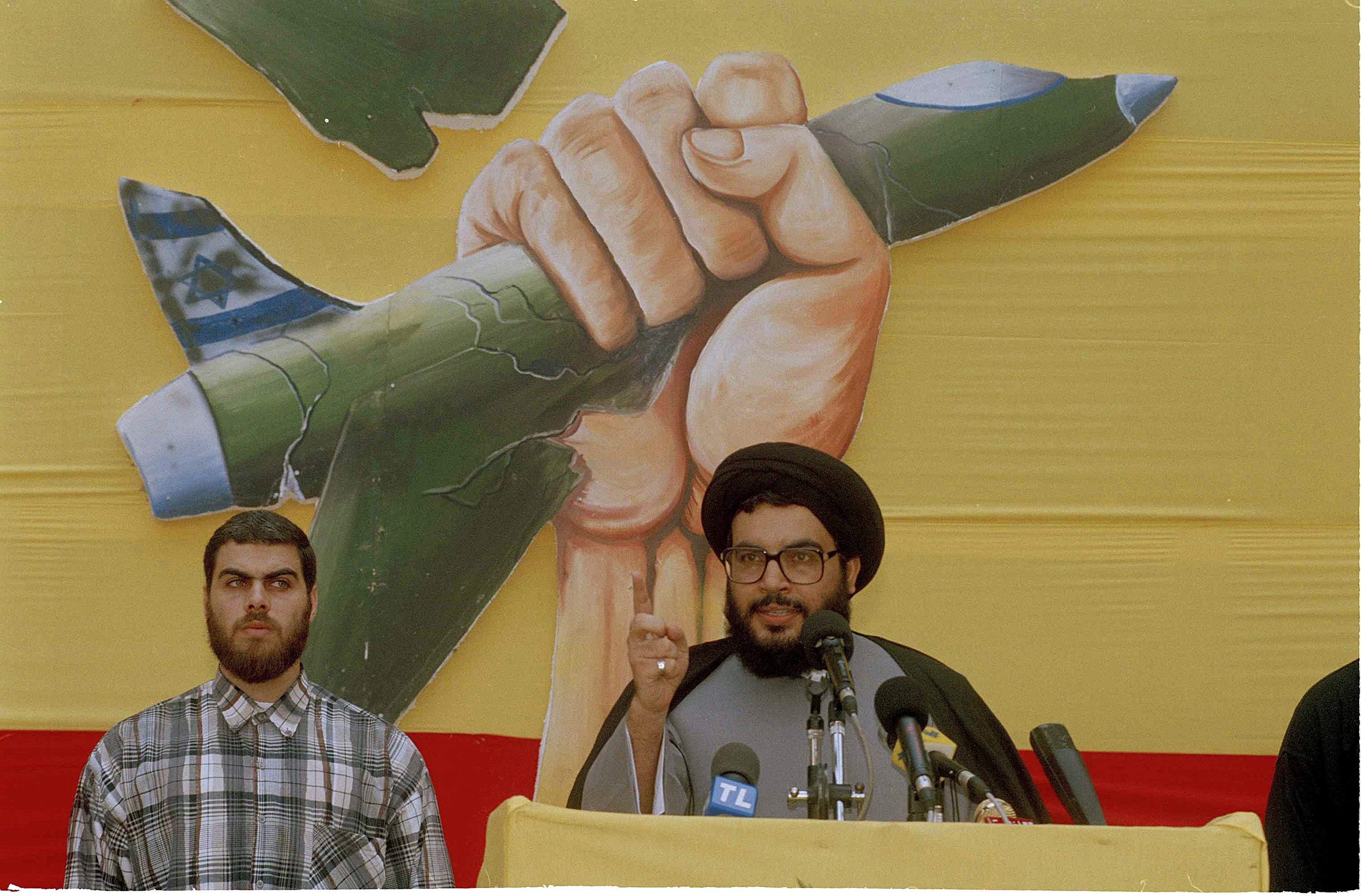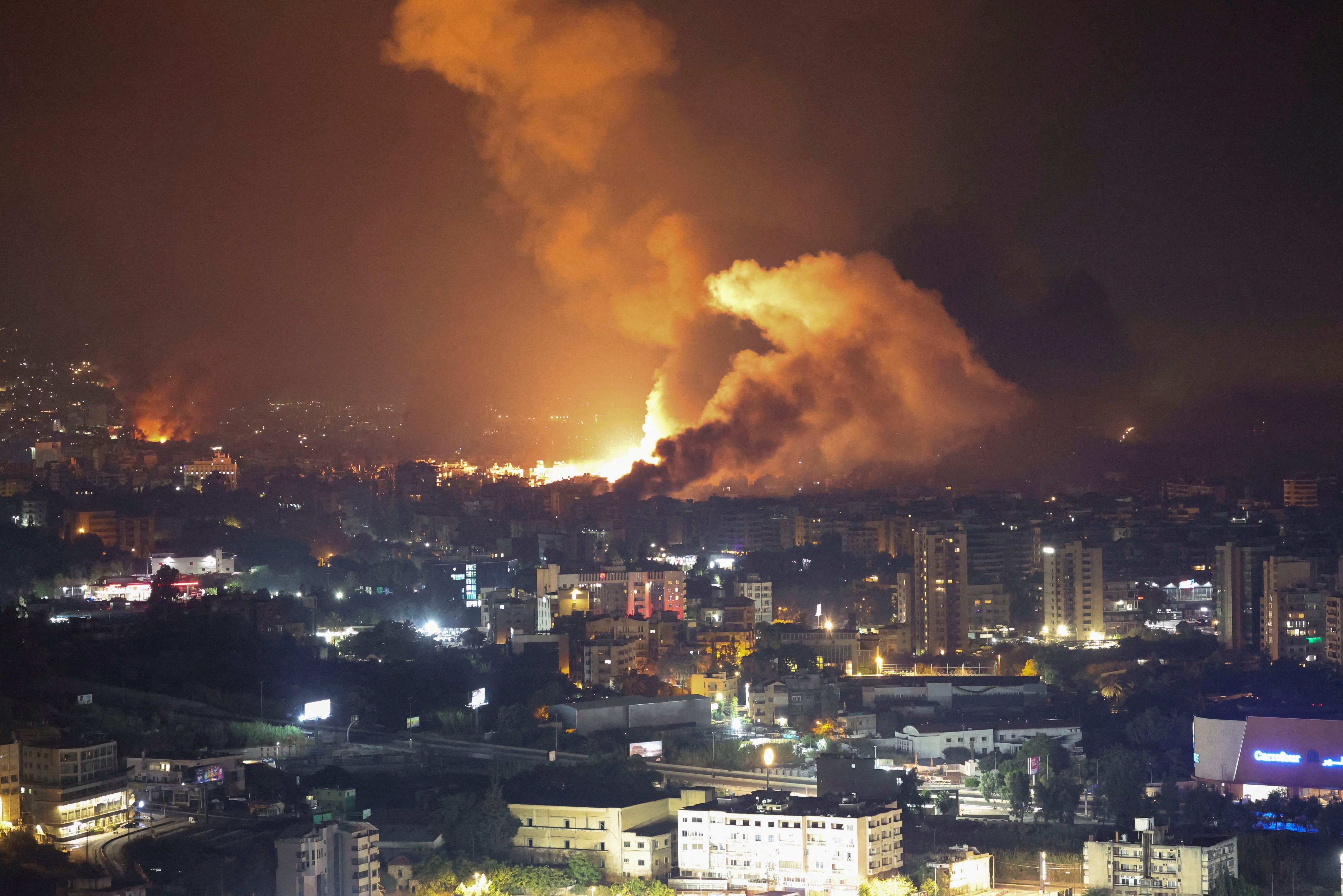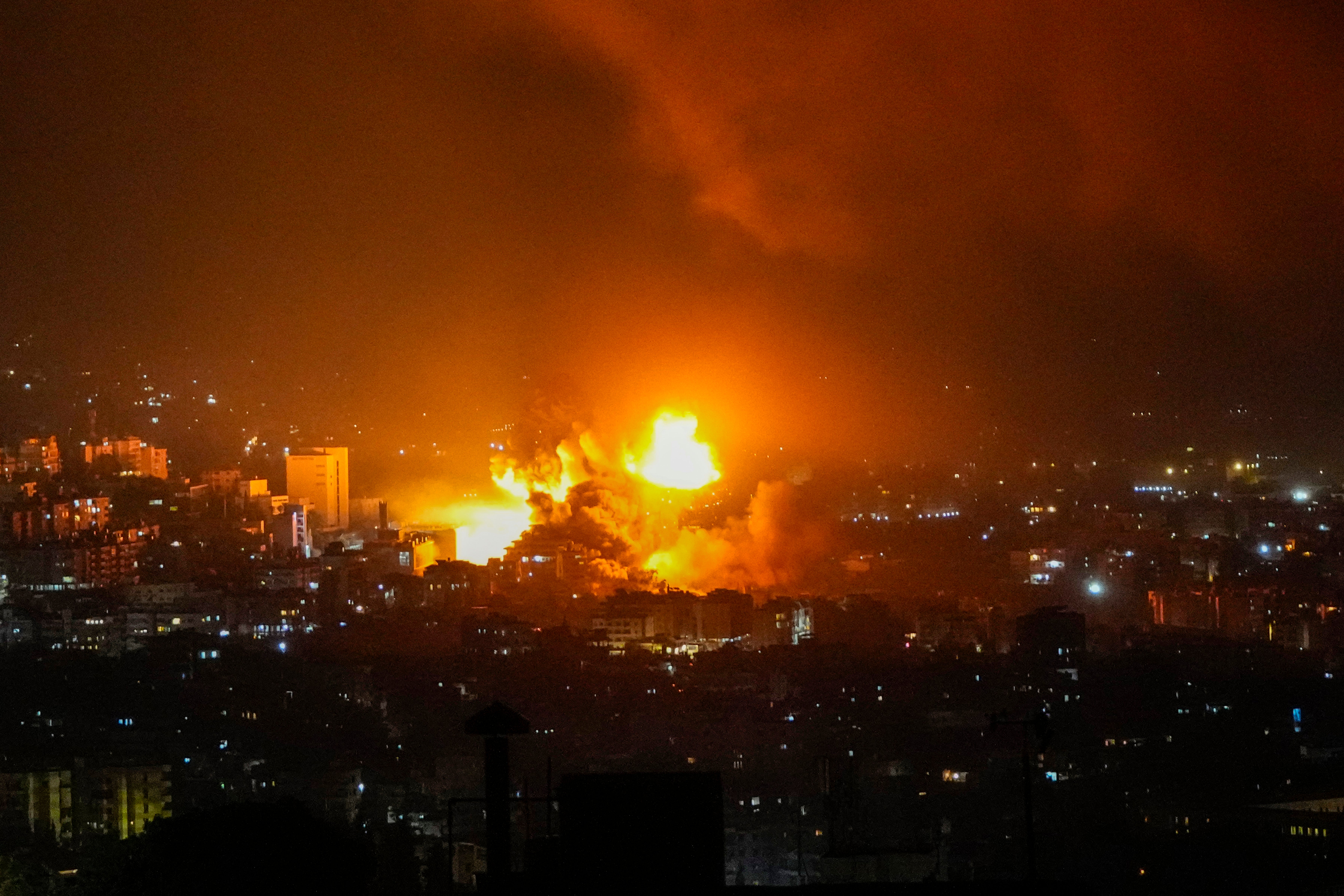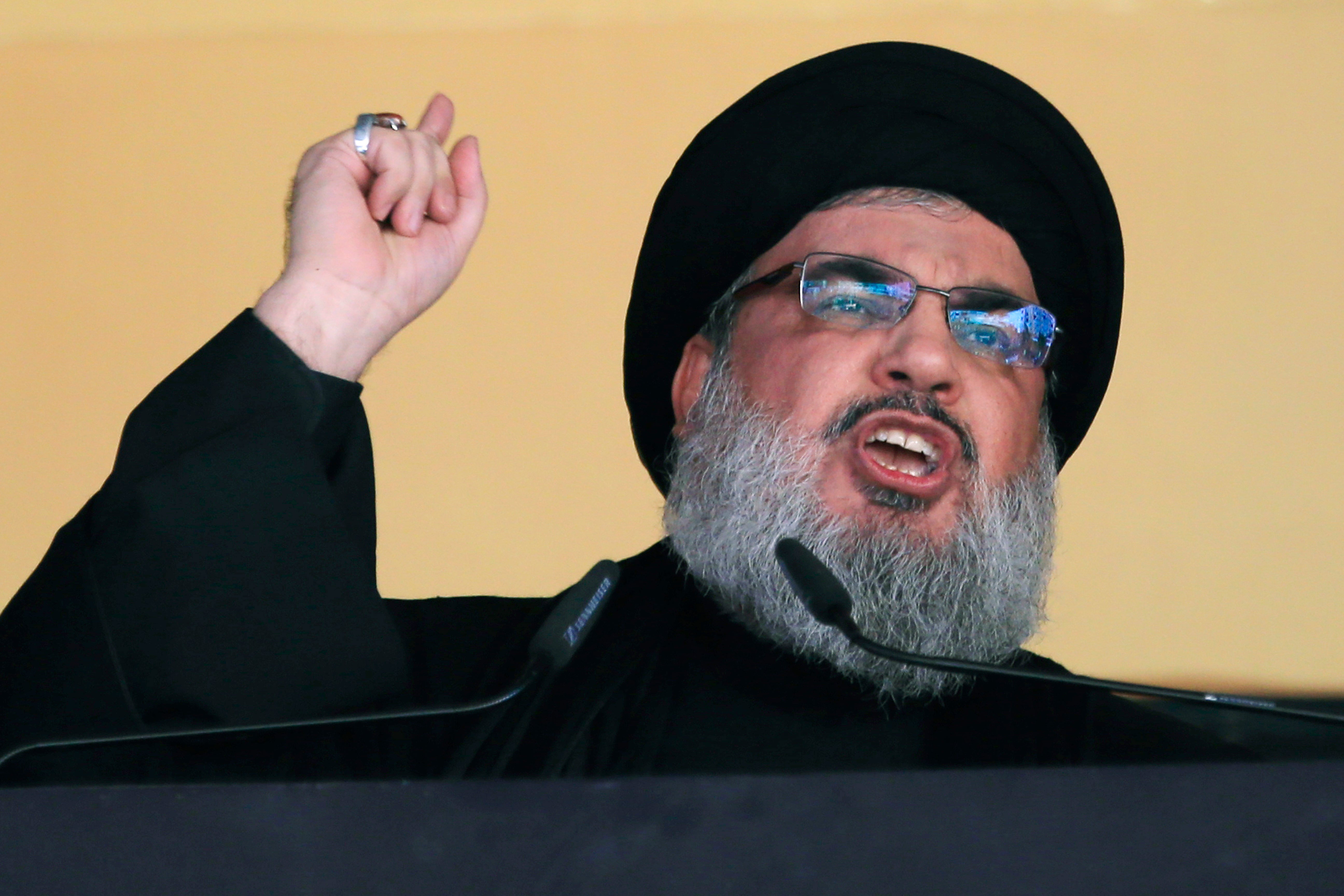Who was Hassan Nasrallah? Hezbollah leader of Lebanese militant group killed in Israeli strike
Hassan Nasrallah’s death is not only an enormous blow to Hezbollah but also to Iran, whose Revolutionary Guards founded the group in 1982
Your support helps us to tell the story
From reproductive rights to climate change to Big Tech, The Independent is on the ground when the story is developing. Whether it's investigating the financials of Elon Musk's pro-Trump PAC or producing our latest documentary, 'The A Word', which shines a light on the American women fighting for reproductive rights, we know how important it is to parse out the facts from the messaging.
At such a critical moment in US history, we need reporters on the ground. Your donation allows us to keep sending journalists to speak to both sides of the story.
The Independent is trusted by Americans across the entire political spectrum. And unlike many other quality news outlets, we choose not to lock Americans out of our reporting and analysis with paywalls. We believe quality journalism should be available to everyone, paid for by those who can afford it.
Your support makes all the difference.Hezbollah leader Hassan Nasrallah has been killed in an Israeli airstrike in southern Beirut, after 32 years at the helm of the Lebanese militant group.
During Nasrallah’s decades in charge, Hezbollah has grown into a regional force that has projected Tehran’s influence across the Middle East.
His death marks not only an enormous blow to Hezbollah but also to Iran, whose Revolutionary Guards founded the group in 1982.
Another top Hezbollah leader – Ali Karaki – was also killed in the attack, which levelled six apartment buildings, alongside Revolutionary Guards deputy commander Abbas Nilforoushan. Iran has vowed to retaliate.
“Hassan Nasrallah will no longer be able to terrorise the world,” the Israeli military said. Spokesperson Daniel Hagari insisted that Nasrallah – whom he said was “among the biggest-ever enemies of Israel” – had “posed a threat to Israeli citizens for decades, and his elimination makes the world a safer place”.
Friday’s attack, followed by a heavy bombardment further airstrikes on Saturday and Sunday, have escalated the conflict between Israel and the heavily armed group, adding to concerns the region could be sucked into a broader war.
The military said that it carried out a precise airstrike while Hezbollah leadership met at their headquarters in Dahiyeh, south of Beirut.

Who is Sayyed Hassan Nasrallah?
Under the leadership of the 64-year-old Nasrallah, Hezbollah has fought wars against Israel and taken part in the conflict in neighbouring Syria, helping tip the balance of power in favour of the president, Bashar Assad.
A charismatic and shrewd strategist, Nasrallah reshaped Hezbollah into an archenemy of Israel, cementing alliances with Shiite religious leaders in Iran and Palestinian militant groups such as Hamas.
Idolised by his Lebanese Shiite followers and respected by millions of others across the Arab and Islamic world, Nasrallah holds the title of sayyid, or “master”, an honorific meant to signify the Shiite cleric’s lineage dating back to the Prophet Muhammad, the founder of Islam.
A fiery orator viewed as an extremist in the US and much of the West, he is also considered a pragmatist compared to the firebrand militants who dominated Hezbollah after its founding in 1982, during Lebanon’s civil war.
Despite the power he wielded, Nasrallah has lived largely in hiding in the past years for fear of an Israeli assassination.

How he rose to power
Born in 1960 into a poor Shiite family in Beirut’s impoverished northern suburb of Sharshabouk, Nasrallah was later displaced to south Lebanon. He studied theology and joined the Amal movement, a Shiite political and paramilitary organisation, before becoming one of Hezbollah’s founders.
Hezbollah was formed by Iranian Revolutionary Guard members who came to Lebanon in the summer of 1982 to fight invading Israeli forces. It was the first group that Iran backed and used as a way to export its brand of political Islam.
Nasrallah built a power base as Hezbollah over time became part of a cluster of Iranian-backed factions and governments known as the Axis of Resistance.

Two days after its leader, 39-year-old Sayyed Abbas Musawi, was killed in an Israeli helicopter gunship raid in south Lebanon, Hezbollah chose Nasrallah as its secretary-general in February 1992.
Five years later, the US designated Hezbollah a terrorist organisation.
Under Nasrallah, Hezbollah was credited with leading the war of attrition that led to the withdrawal of Israeli troops from south Lebanon in 2000, after an 18-year occupation. Nasrallah’s eldest son, Hadi, was killed in 1997 while fighting against Israeli forces.
After Israel’s withdrawal from southern Lebanon in 2000, Nasrallah rose to iconic status both within Lebanon and throughout the Arab world. His messages were beamed on Hezbollah’s own radio and satellite TV station.
That status was further cemented when, in 2006, Hezbollah fought Israel to a stalemate during the 34-day war.
When Syria’s civil war erupted in 2011, Hezbollah fighters rushed in, siding with Assad’s forces – even though Hezbollah’s popularity took a dive as the Arab world ostracised Assad.

His role in the current conflict
A day after the Israel-Hamas war started on 7 October, Hezbollah began attacking Israeli military posts along the border, calling it a “backup front” for Gaza.
In speeches throughout the conflict, he has argued that Hezbollah’s cross-border strikes had pulled away Israeli forces that would otherwise be focused on Hamas in Gaza and insisted that Hezbollah would not halt its attacks on Israel until a ceasefire is reached in Gaza.
Over the past weeks, he continued to strike a defiant tone as tension rose dramatically, with Israel announcing a new phase in the conflict intended to push Hezbollah back from the border to allow thousands displaced from northern Israel to return.
It launched strikes killing top military commanders with the group and was blamed for the explosion of thousands of communications devices, mainly used by Hezbollah members, that killed 37 people and wounded thousands.



